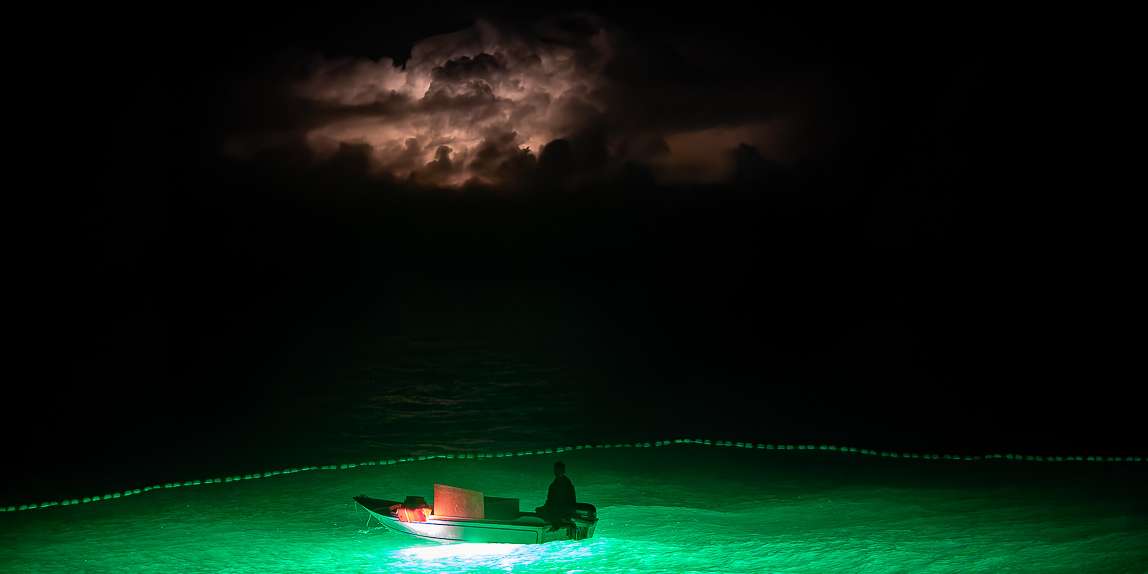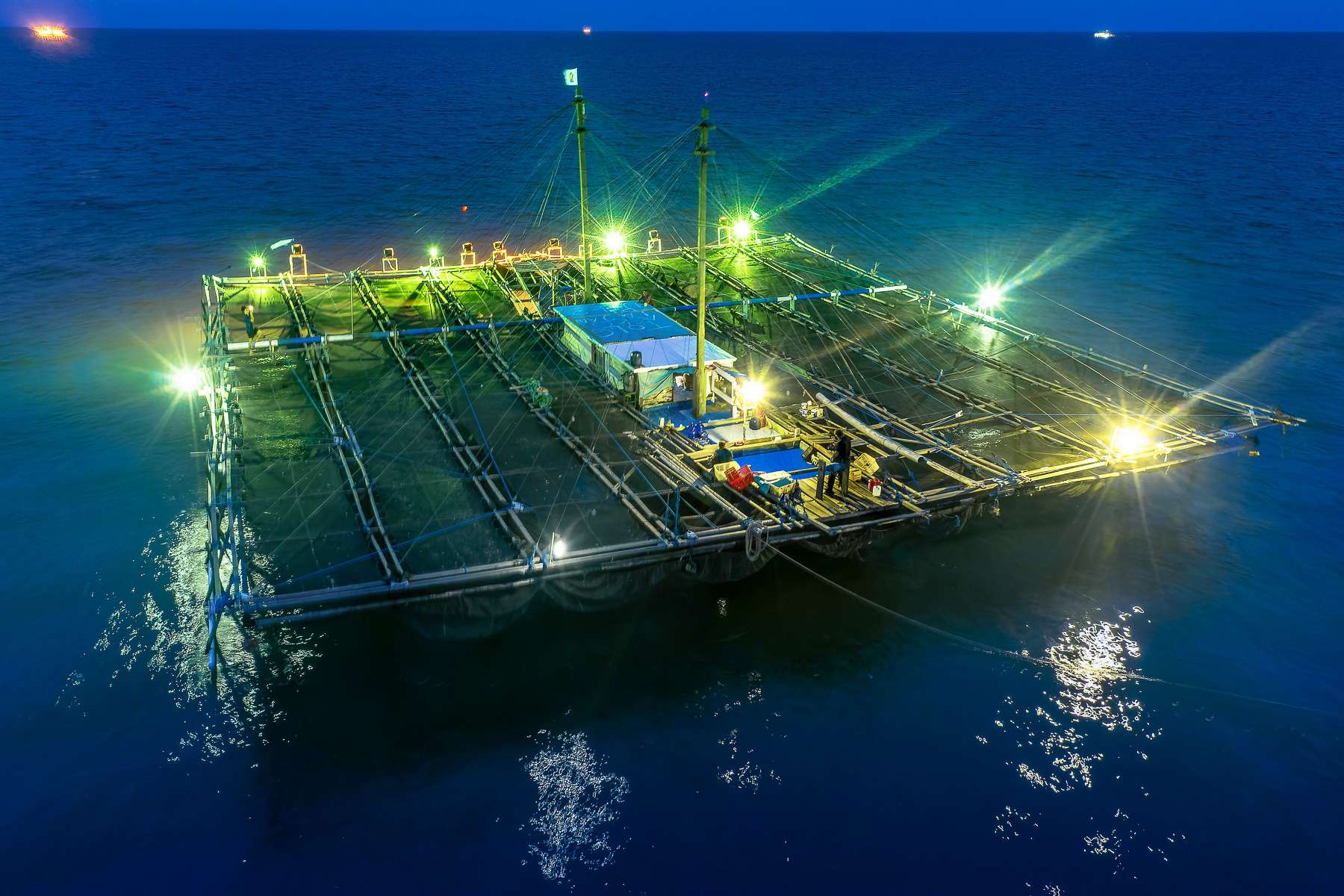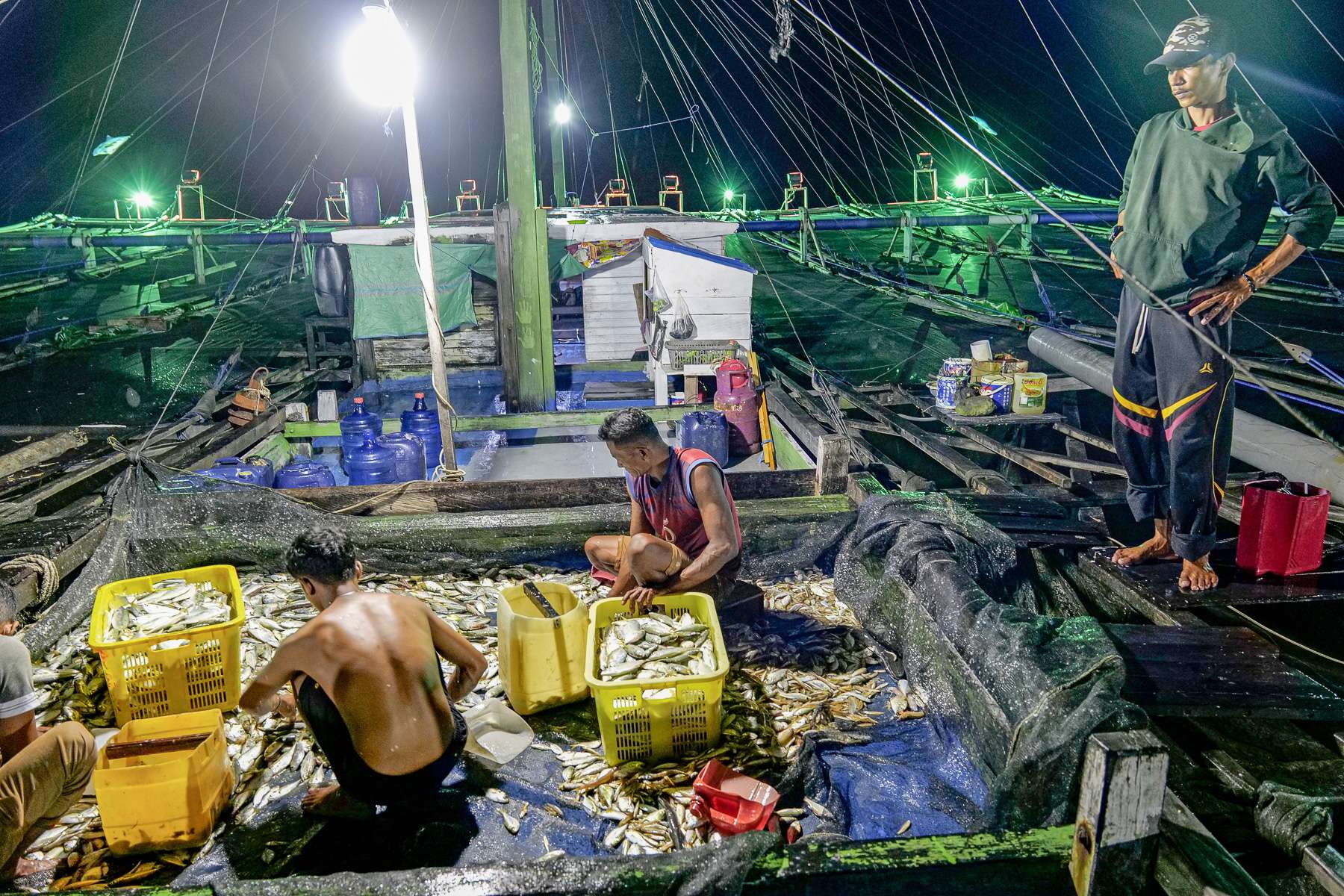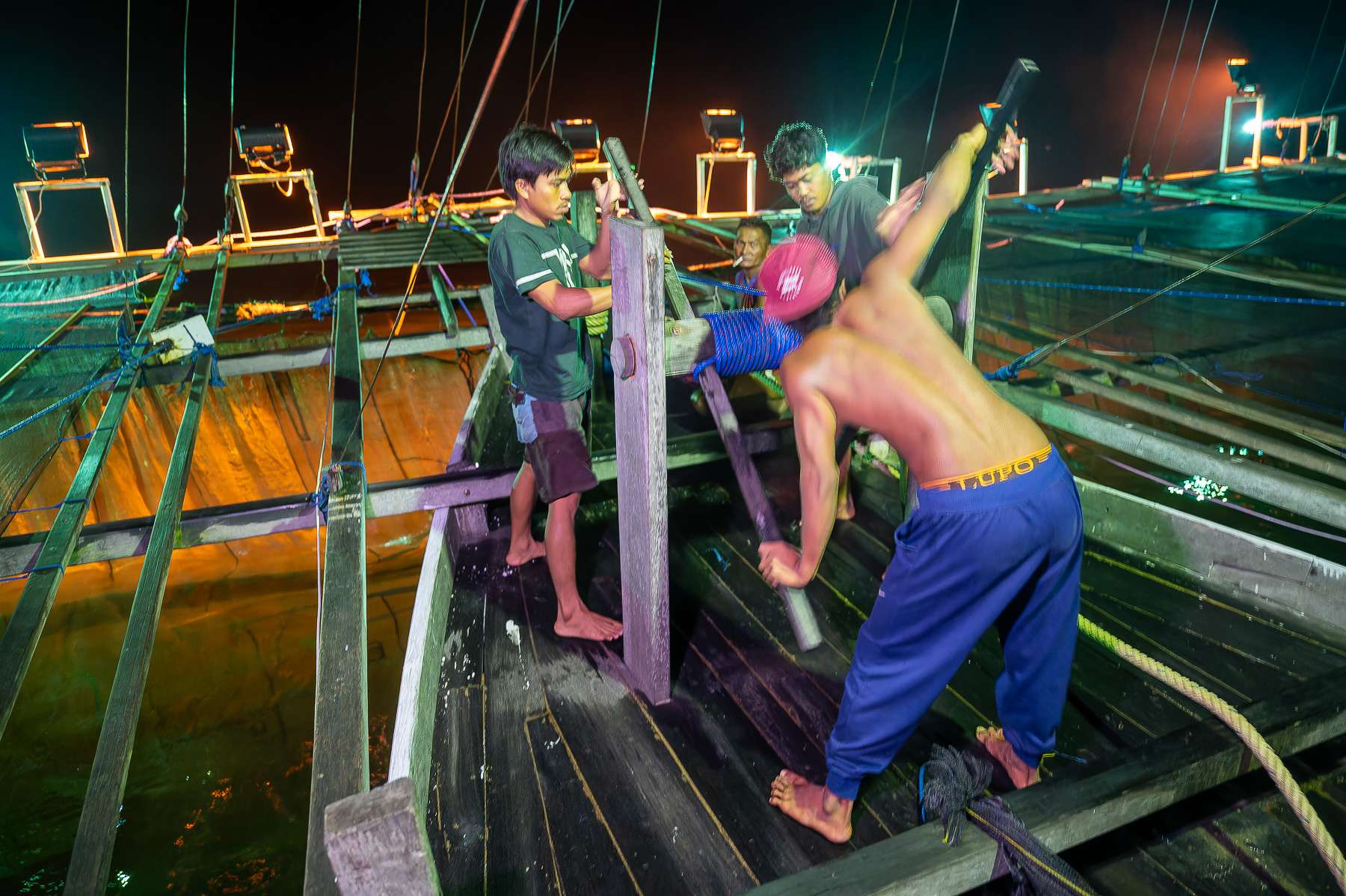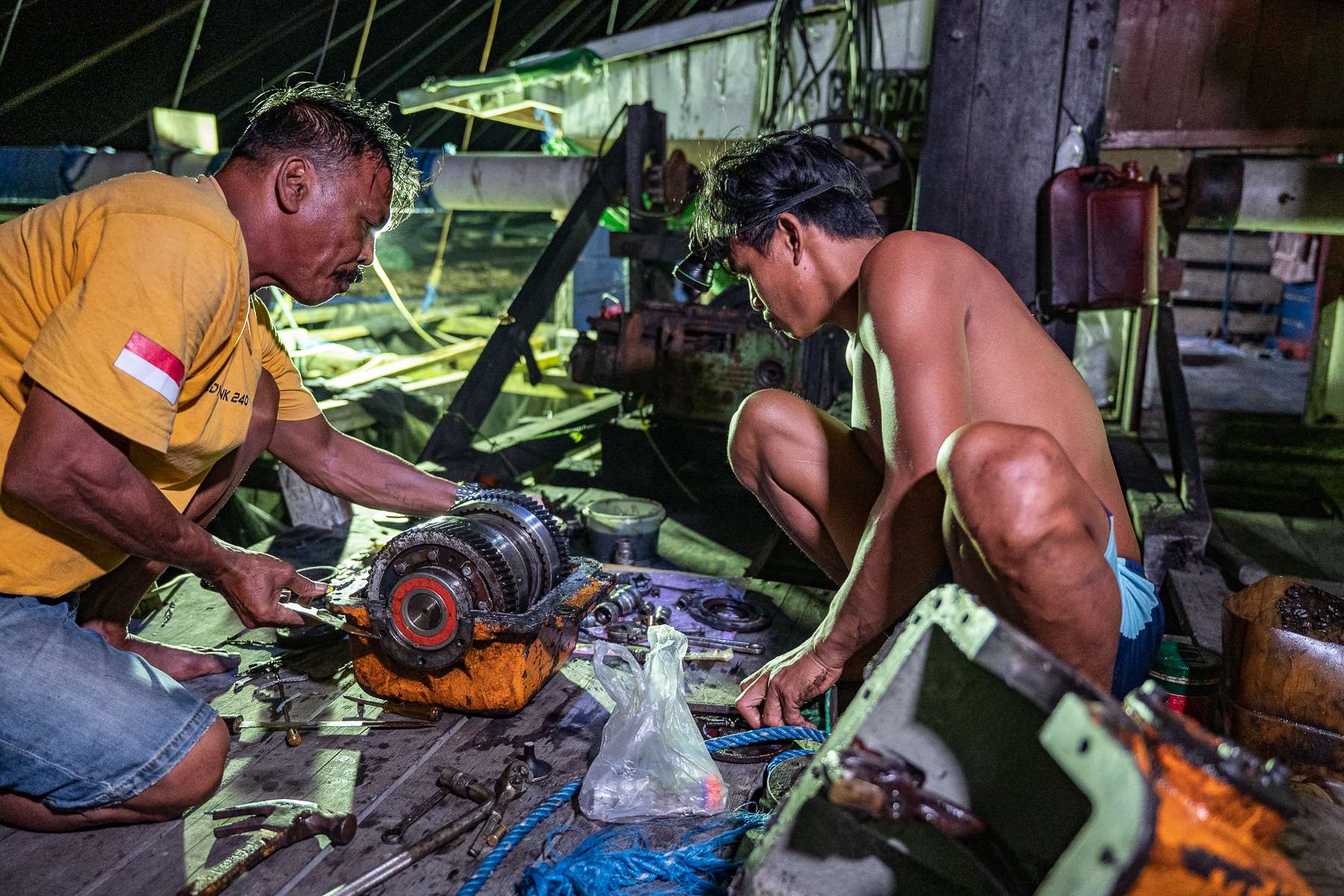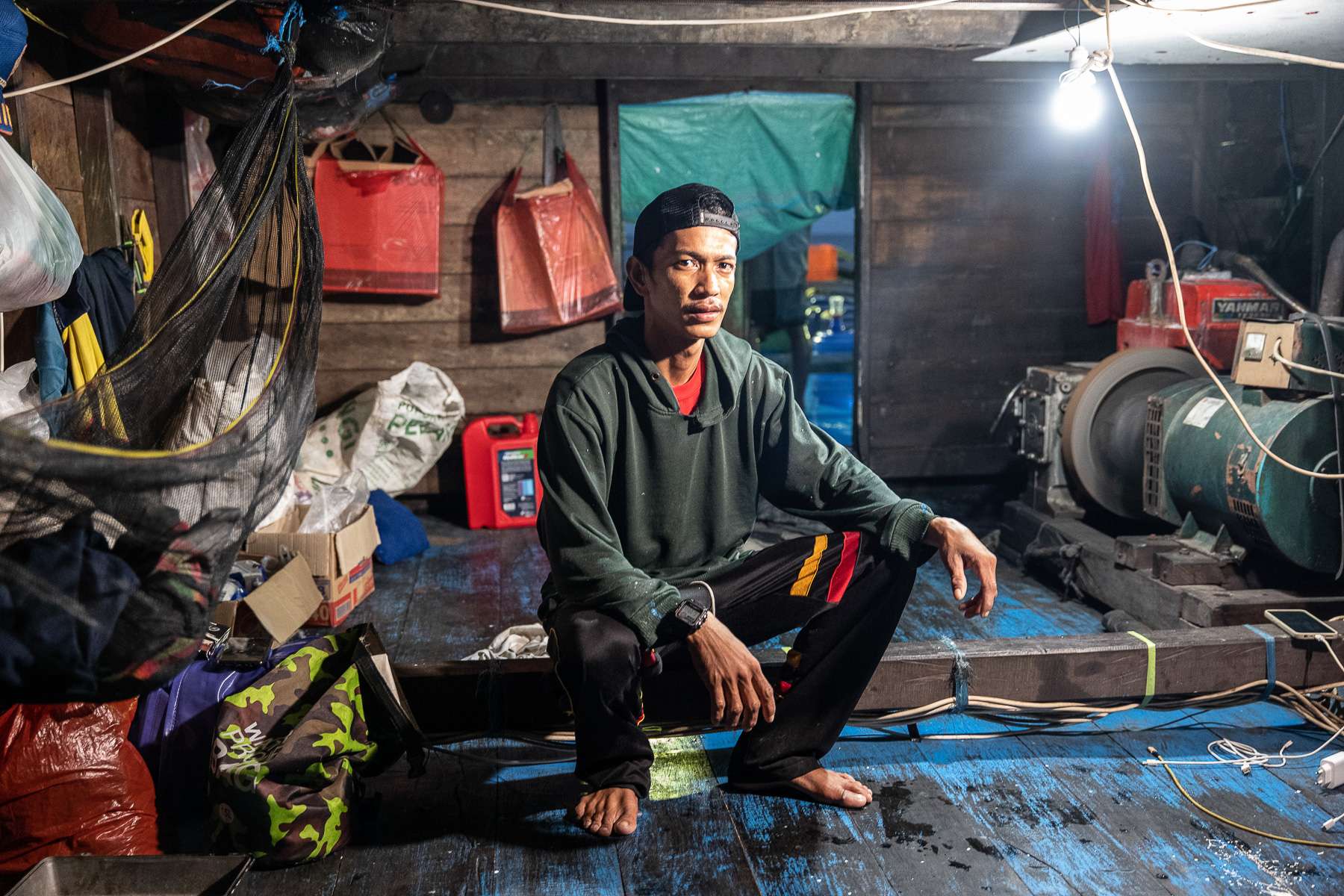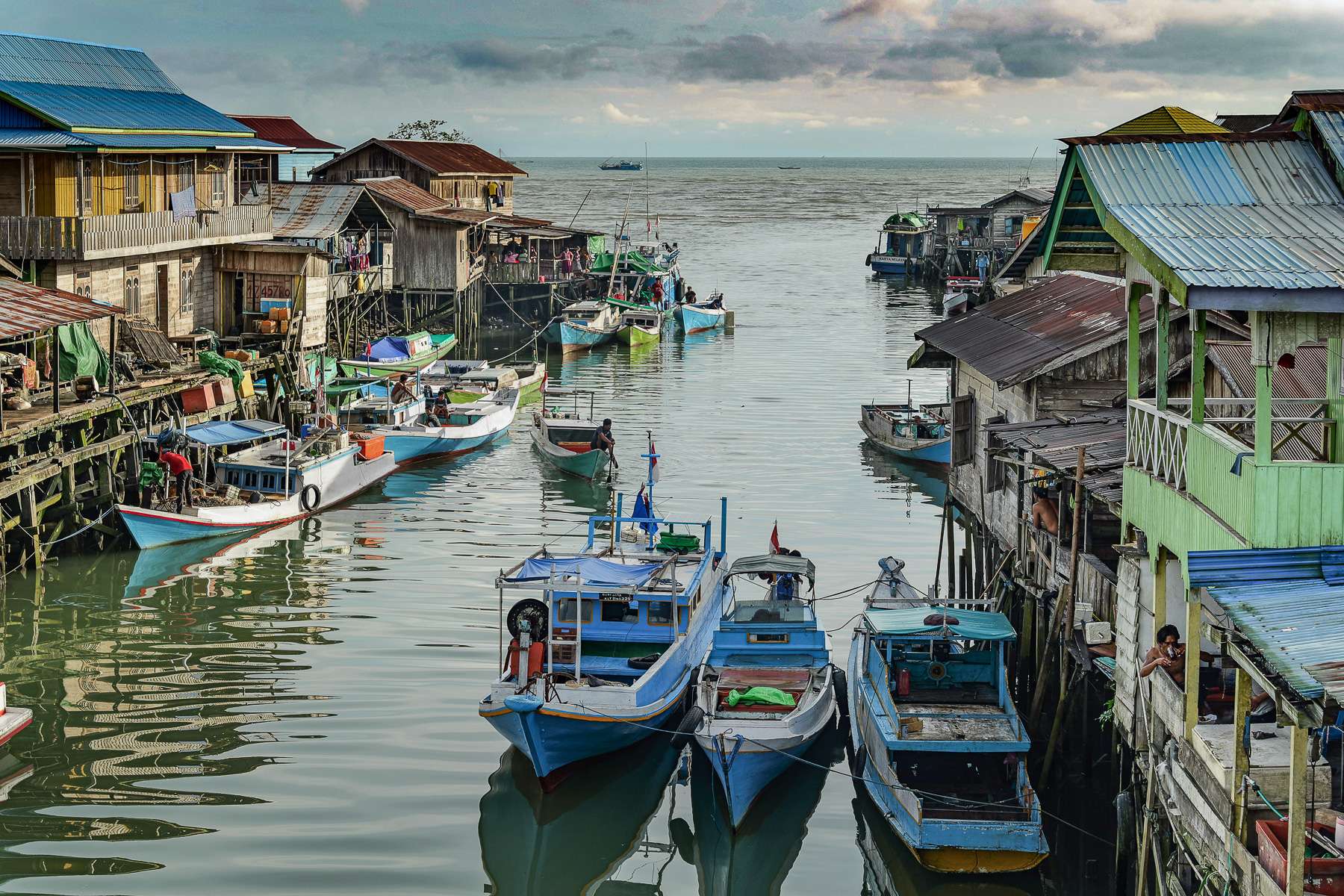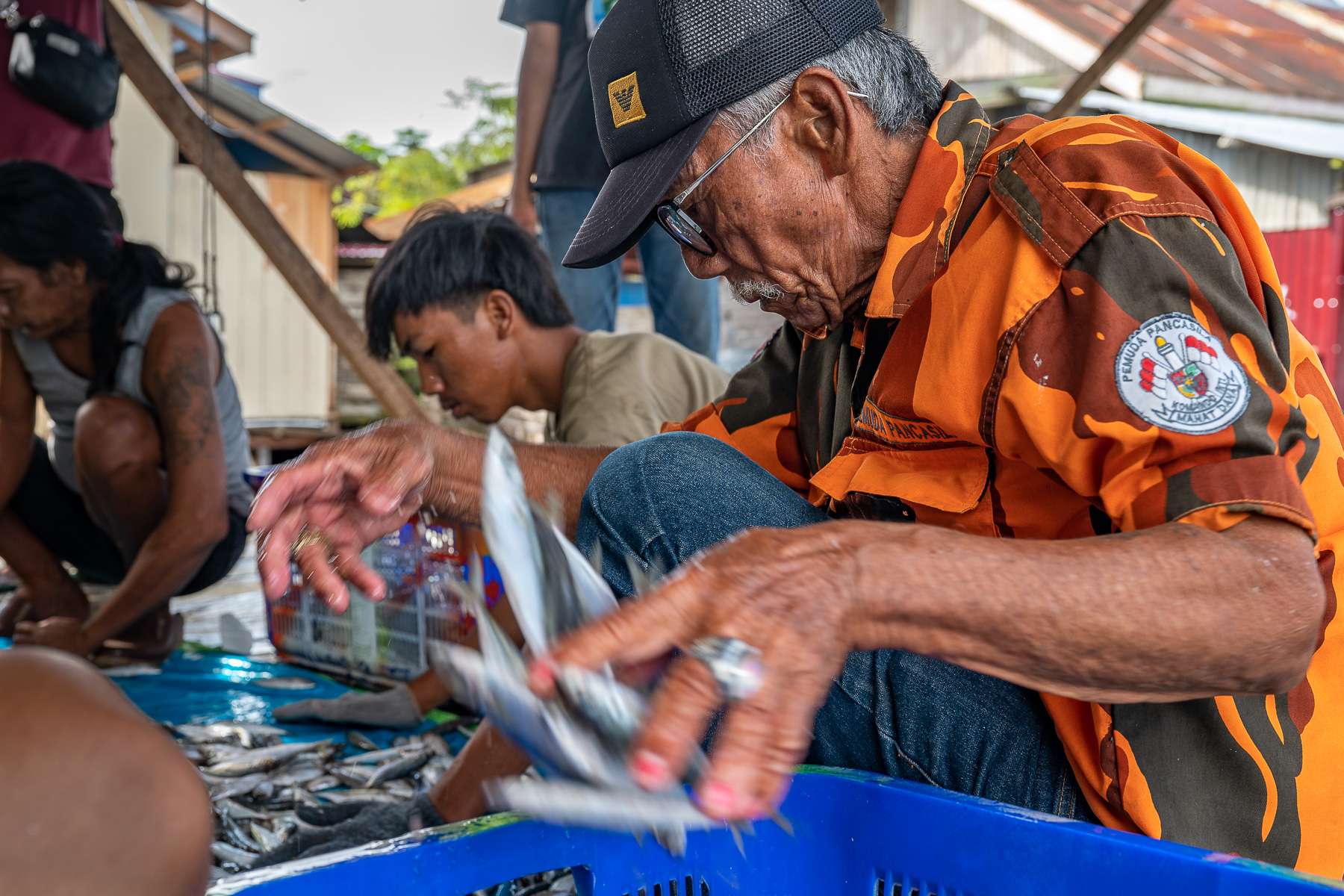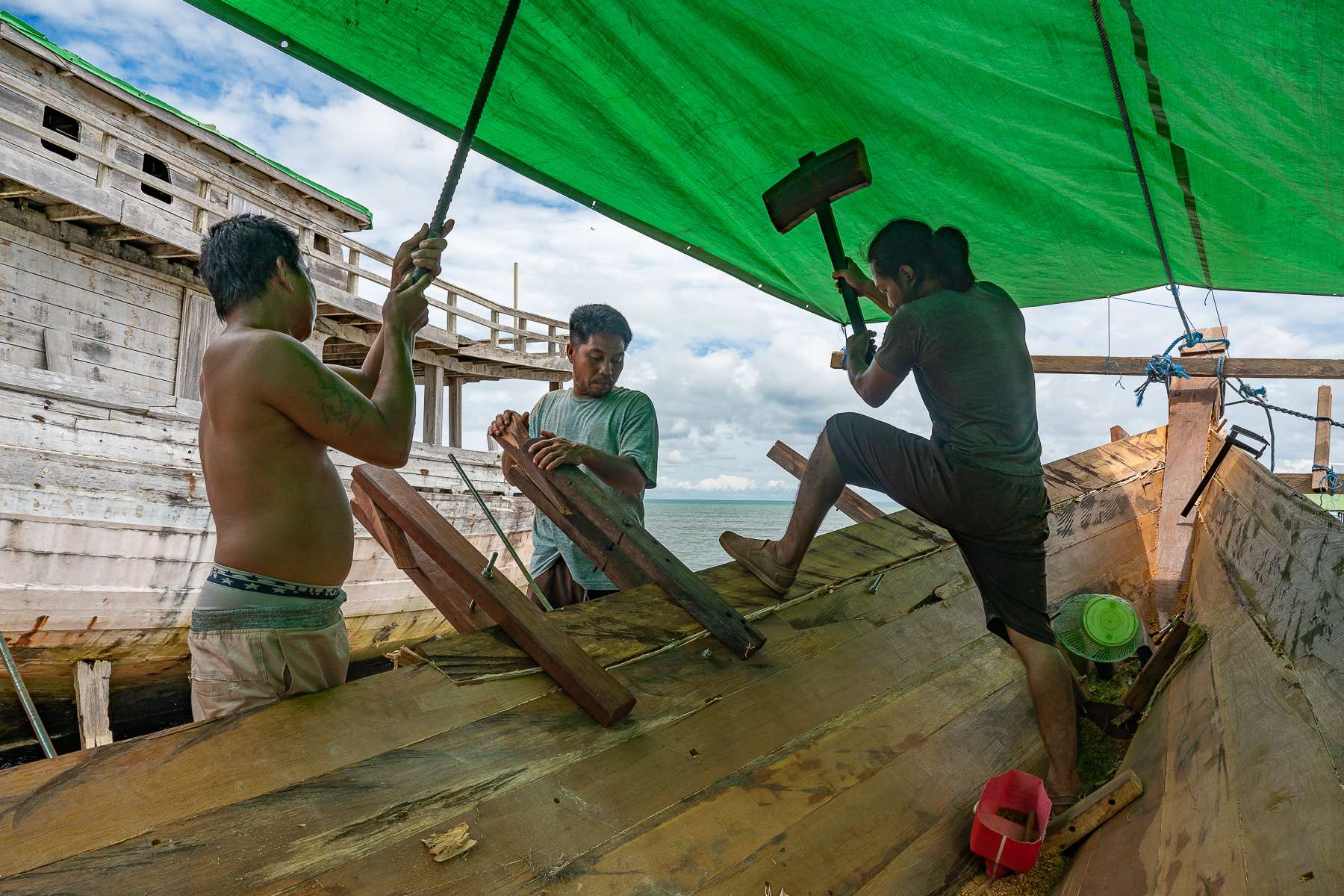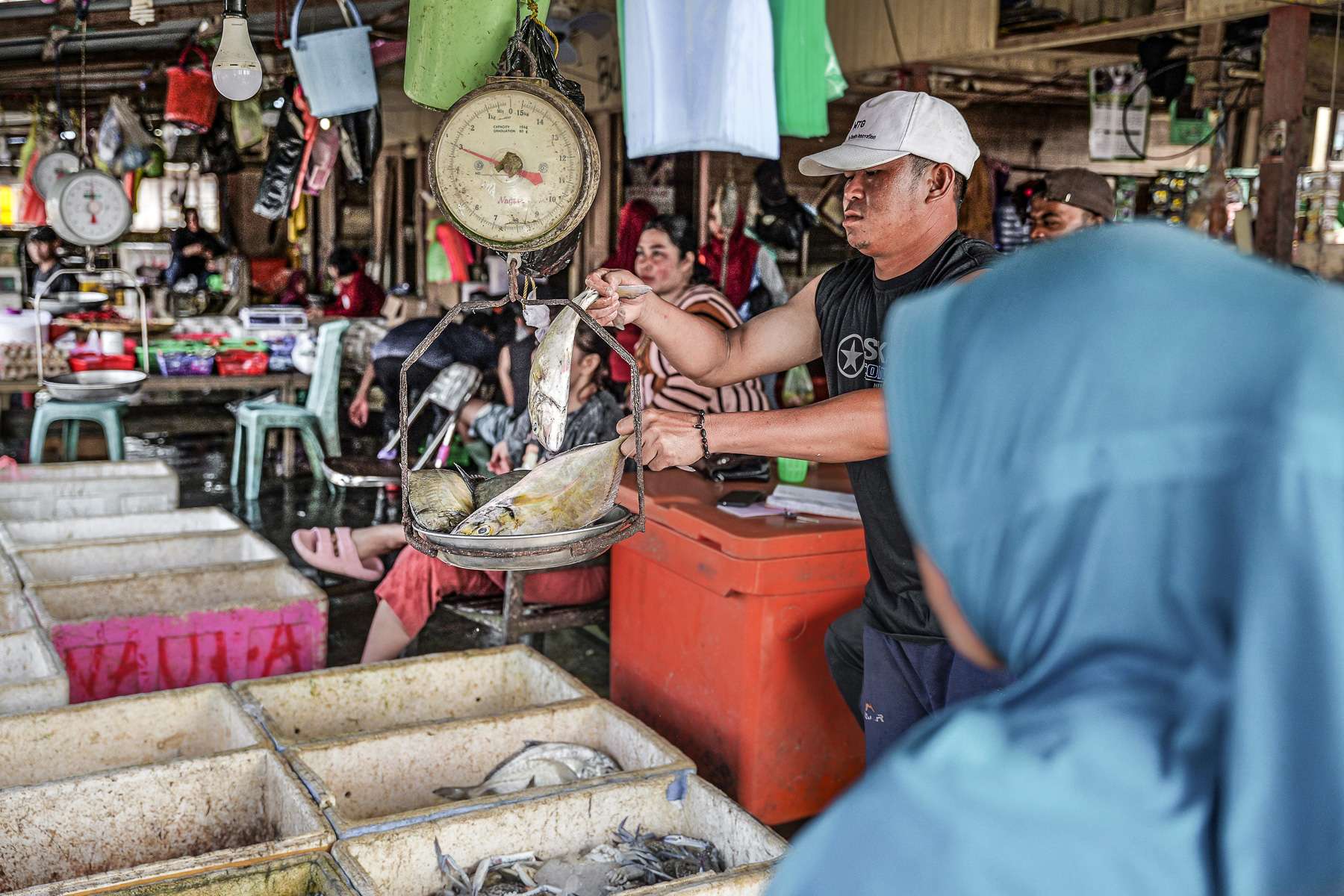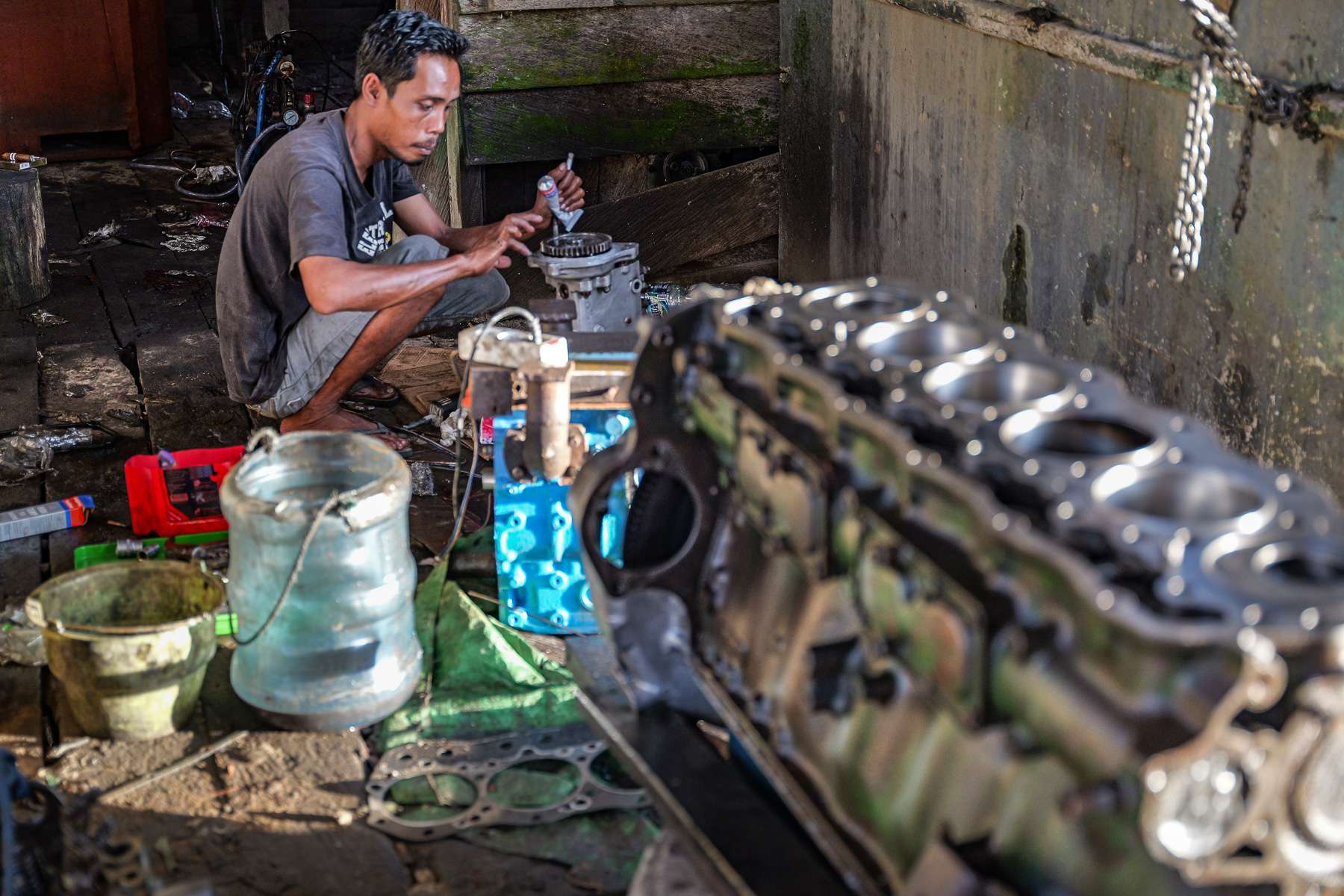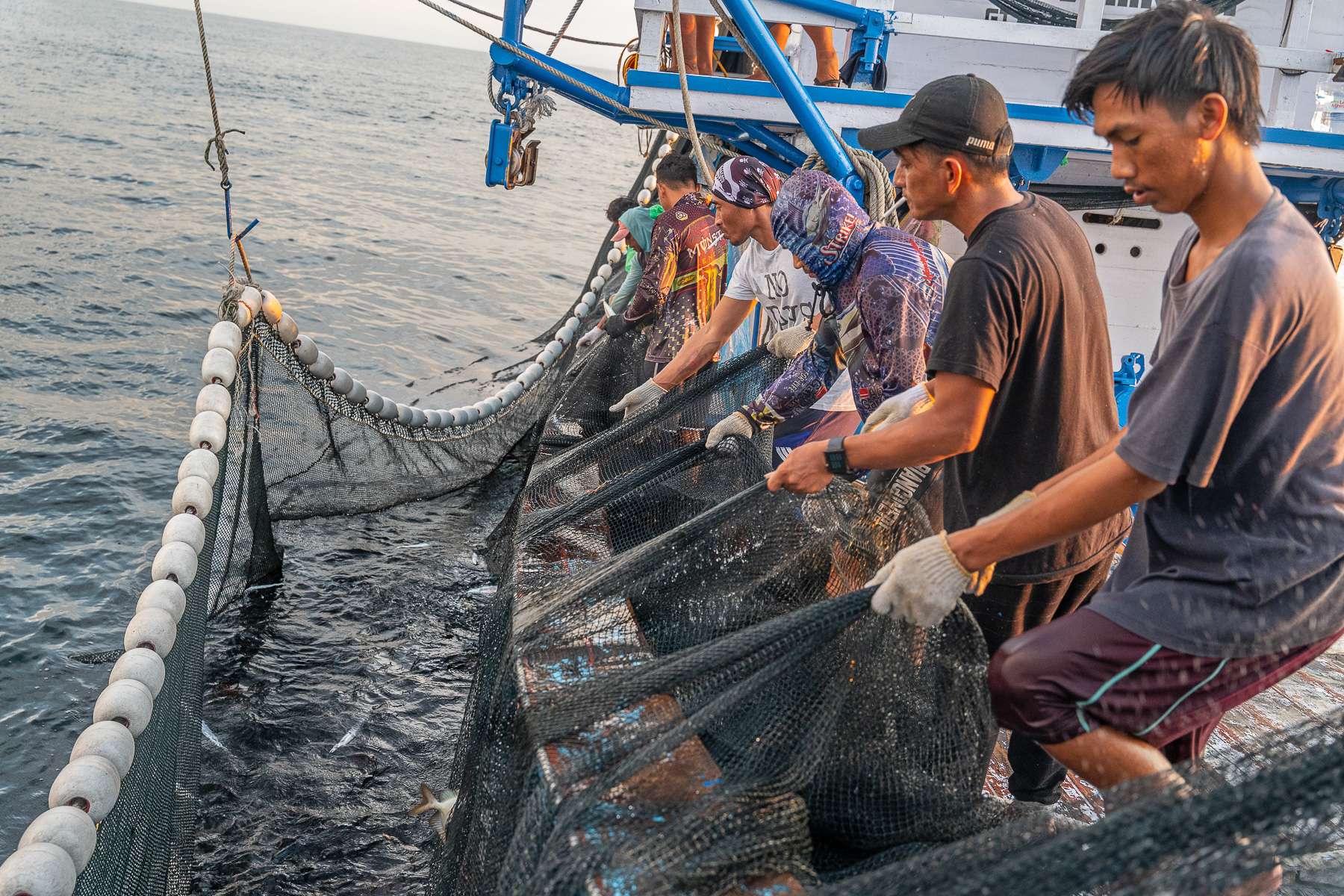Fishing with light.
In the Indonesian part of Borneo, known as Kalimantan, lies the picturesque fishing village of Talisayan, where everything revolves around fish. It is home to the Bugis, once a tribe of notorious pirates and admired navigators. Today, they mainly work as fishermen and sailors on the Bugi schooners of the Indonesian sailing fleet, which bring timber from the countless islands of the archipelago to Surabaya or Jakarta.
Talisayan is home to what is probably the largest fleet of bagans, huge floating fishing platforms that look as if they have stepped out of a dystopian end-time film. Eight men fish on the bagans, exclusively at night. Huge batteries of lamps with glaringly bright mercury vapour lamps, familiar from floodlit football pitches, lure the fish from greater depths into deeper water, where they are then caught in the nets of the bagans. When the catch begins, the nets are lowered behind the lamp battery and the fish are lured in.
Night fishing with light has been practised here for many decades. Sardines, anchovies, mackerel and spike fish are among the fishermen’s biggest catches. Occasionally, squid are also caught in the net, more rarely a barracuda or a bumphead parrotfish. The fishermen have to be particularly careful of the numerous poisonous sea snakes, which are also attracted by the light and sometimes end up in the net. Most fatal accidents involving these particularly venomous reptiles occur when the snakes are removed from the net. Once the catch of a haul is on deck, the crew sorts it according to fish species and cools it with ice.
The bagans have no propulsion of their own. They are anchored at sea, usually several hours’ boat journey from Talisayan. If the berth no longer promises a good catch, the bagan is simply towed to another fishing spot by the feeder boat, which also brings the fish caught to the dealer every day.
The larger bagans, which are still built by hand from hard and heavy ironwood in a shipyard in Talisayan, are over 30 metres long. They consist of a narrow hull over which the trapeze with its numerous struts is built. They are attached to the two masts by countless steel cables to ensure that they hold. To prevent this bulky construction from capsizing, it has buoyancy bodies made of watertight drainpipes along the entire length of the Bagan. These keep the Bagan levelled like the trimarans of the South Sea islanders. All of this is only installed in the water, as there is not enough space in Talisayan’s harbour.
A cabin measuring around 60 square metres is also built on the hull. It houses the generator that produces the electricity for the many lamps used to attract the fish. It also serves as a living and sleeping area for the crew, especially during the frequent tropical rain. In the cabin, it is pitch dark between the hauls of the nets, so that you can only just see your own feet. But that’s only because you have to bend down because of the low ceiling and are therefore closer to your feet. You can’t really talk about sleep, as the generator is so loud that you feel like you’re trying to sleep in the engine room of the Titanic.
He had to pay around 100,000 dollars for his Bagan, says the young captain Hasanuddin. A bank and his father helped with the financing. A Bagan lasts 15 years, he says. It has to be paid off by then.
Photos: Rolf Nobel and Andreas Gladis, Text: Rolf Nobel.
